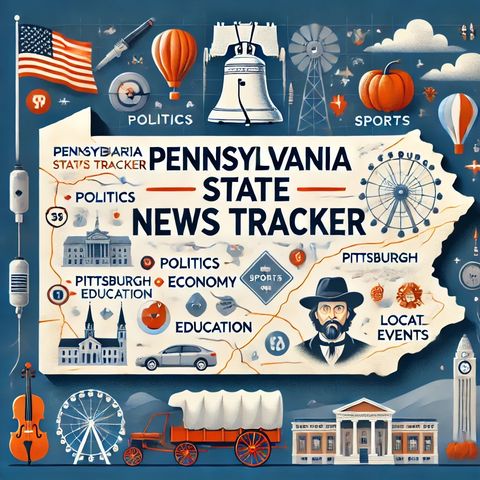Pennsylvania's Political Landscape Reveals Shifting Dynamics and Diverse Voter Preferences

Download and listen anywhere
Download your favorite episodes and enjoy them, wherever you are! Sign up or log in now to access offline listening.
Pennsylvania's Political Landscape Reveals Shifting Dynamics and Diverse Voter Preferences
This is an automatically generated transcript. Please note that complete accuracy is not guaranteed.
Description
Pennsylvania, often considered a political battleground state, has seen significant interest and intense electoral battles due to its status as a key swing state in presidential elections. The state's political...
show moreA recent development in Pennsylvania politics is reflected in the successes and setbacks experienced by both political parties, particularly notable in the 2024 elections. Despite Republican victories at statewide levels, the Democratic Party found solace in key wins, indicating a complex political fabric where neither party holds absolute sway. This outcome underscores the mixed political inclinations among the voters and the effective campaign strategies tailored by both parties to appeal to diverse groups within the state.
Pennsylvania's economy and policies are significantly influenced by its gubernatorial leadership, with the administration focusing on various critical issues including health care, education, economic growth, and infrastructure. The state's economy is multifaceted, with a strong presence in industries such as manufacturing, agriculture, and energy. Pennsylvania is one of the largest producers of natural gas in the nation, a position that has profound environmental and economic implications. Environmental policies are thus a significant aspect of the state’s legislative focus, with debates centered around sustainable practices and economic development.
The demographic shifts and urbanization trends in Pennsylvania also play crucial roles in shaping its political landscape. Cities like Philadelphia and Pittsburgh, which lean more Democratic, contrast with the more rural areas that typically support Republican candidates, illustrating the diverse political attitudes and preferences across the state. Understanding these demographic dynamics is crucial for political strategies in statewide and national elections.
The state's education system and employment rates are also frequent topics in the political discourse, directly influencing electoral outcomes as candidates propose reforms and policies to address these issues. The quality of public education, access to affordable higher education, and job creation are central themes in campaigns, resonating deeply with voters' concerns.
Moreover, Pennsylvania's strategic importance in the electoral college system often makes it a focus of national attention during presidential elections. Campaigns invest heavily in the state, with candidates frequently visiting and tailoring their messages to address the concerns of Pennsylvania's diverse population.
In conclusion, the nuanced political landscape in Pennsylvania, highlighted by the recent elections, showcases the ongoing and dynamic interplay of various social, economic, and demographic factors. As both parties analyze the 2024 election outcomes, the strategies adopted in Pennsylvania will likely serve as key indicators and learning points for future electoral battles both within and outside the state.
Information
| Author | QP-4 |
| Organization | William Corbin |
| Website | - |
| Tags |
Copyright 2024 - Spreaker Inc. an iHeartMedia Company
